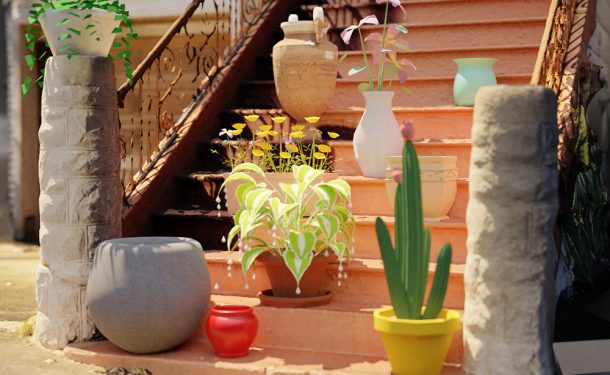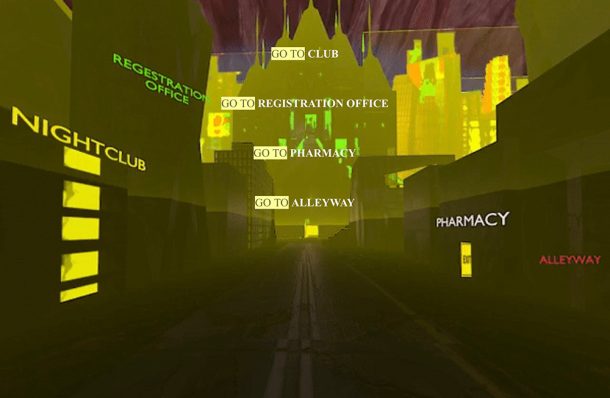In 2019, I was awarded a grant by the Art Fund New Collecting Award to further develop our collection of digital design for the V&A. As part of that work, I have spent time visiting other collections questioning how the heritage sector is approaching the challenges that come with acquiring complex digital objects. In 2019, and earlier this year, I had the opportunity to visit brilliant colleagues at MoMA, Cooper Hewitt Design Museum, Hirshhorn Museum, and National Museum of American History Smithsonian, Library of Congress, and MAK in Austria. I was also greatly encouraged, with expert advice, by my mentor Dr Tilly Blyth, whose experience working with complex technological objects was greatly beneficial, as well as advice on developing these objects as a group. How do we capture the way that digital practitioners are experimenting with software today? What does it mean to acquire process? What are the complications of preserving work made with software that is constantly changing or made obsolescent every day?
With this project, which had the possibilities to be vast in scope, I decided to focus on acquiring objects that looked to the ways that contemporary digital design practitioners are working with computer generated imagery (CGI) technologies, such as those used to create computer graphics and animation such as with software such as Blender and Cinema4D. Within the V&A collection, we have a rich historical representation of how computer graphics has developed, with work reaching back to the 1950s that detail where practitioners have experimented with new and emerging technologies to find creative and innovative ways to make art and design.
With this collecting initiative, I was keen to capture how the development of both open source and commercial technologies in the 1990s had made computer graphics and animation available to more designers and inspired experimental practises in a multitude of ways. The four works that enter the collection through the Art Fund New Collecting Award project look to experimentation in video games, how research-led animation films question our relationship to the machine-readable world, experimental textiles that complement commercial studio practice and investigations in hyper-real objects that probe the spaces between digital and physical environments and aesthetics. It is by no means a comprehensive effort, but rather an invitation to consider how graphics and animation software has become an important part of creative practise as we know it.
Images and animations made by software such as Blender and Cinema4D, as well as images made through the growing use of generative AI, have become so embedded into everyday life that there is a growing necessity to critique its place in visual culture. Examples from recent history include the near ubiquitous use of CGI on rendered city-hoardings that project near-identical future visions of our cities that never match reality, fashion companies fabricating diversity through CGI models, to histories of IKEA’s huge 3D asset library. As with early computer-generated work, there are issues of labour, tools, environmental concerns, and the politics embedded in making pictures with computers that need to be examined, so as a museum that has a history in understanding the role of design, manufacture and industry, the V&A is well placed to explore how a museum collection can enable these conversations.
The works
ZEITGUISED
ZEITGUISED, based in Berlin and founded in 2001, are a conceptual design studio with a creative artistic practice that moves between abstraction and realism through the use of computer generated and procedural design. The project chosen for the V&A’s collection was their 2016 award-winning film geist.xyz, a ‘0% organic’ exploration of abstract digital textiles that algorithmically cycles through a series of materials, colours and textures in a hypnotic, otherworldly loop, created in rendering software Cinema 4D, fabric simulation software Marvellous Designer and biological simulation software among others.

Simone C Niquille
Simone C Niquille, based in Amsterdam, is a Swiss designer often found interrogating how objects, people and everything in-between are represented in computational space. Sorting Song (2021), the computer-generated work by Niquille chosen for acquisition, asks questions of the objects that we, as humans, often take for granted, many of which you’ll see in our galleries today. Created from the SceneNet RGB-D indoor training dataset, used to train domestic robotics by Dyson Robotics lab at Imperial, Niquilles’s comedic yet sharp film shows the importance of human context within a machine-readable world.

Danielle Brathwaite-Shirley
Danielle Brathwaite-Shirley is an artist who centres Black trans experiences through games, installations, animation and other technologies, presenting the works created as a result of dialogue with the community as a growing, living archive. Blacktransair.com / I CANT REMEMBER A TIME I DIDNT NEED YOU (2020) is an internet-based game, created using a combination of digital design tools such as Blender and Twine, which invites the player into a space in which Black trans experience is centred and prioritised. The game itself is created from an archive of experiences and visual contributions, such as abstracted photographs, textures and images, which Brathwaite-Shirley has built from conversations with the Black trans community and the artist’s own lived experience.

Lucy Hardcastle
Lucy Hardcastle, based in London, works across the digital and the physical to push at the limits of sensation in the virtual world. Using software including Cinema4D, photography, set design and practises such as glass blowing and set design, Hardcastle pursues a more embodied and tactile relationship with technology through an exploration of texture, material, light and shape. Pillow II (2016), a triptych of works, is one of Hardcastle’s earliest explorations of pulling objects through physical and digital spaces in order to test how the different aesthetics afforded by multiple software and various computational manipulations create different emotions and physical sensations.

Each work acquired has also led us to redevelop our collection processes as a means of research through acquisition, following from work we have initiated through research projects such as the Preserving and Sharing Born Digital and Hybrid Objects Across the National Collection, for which one of these objects, geist.xyz, was a case study. Digital collecting is a vibrant, exploratory area of interest, encouraging many institutions as well as the V&A to understand how we can collect objects with such complexity that challenge our ideas of objecthood and process.


